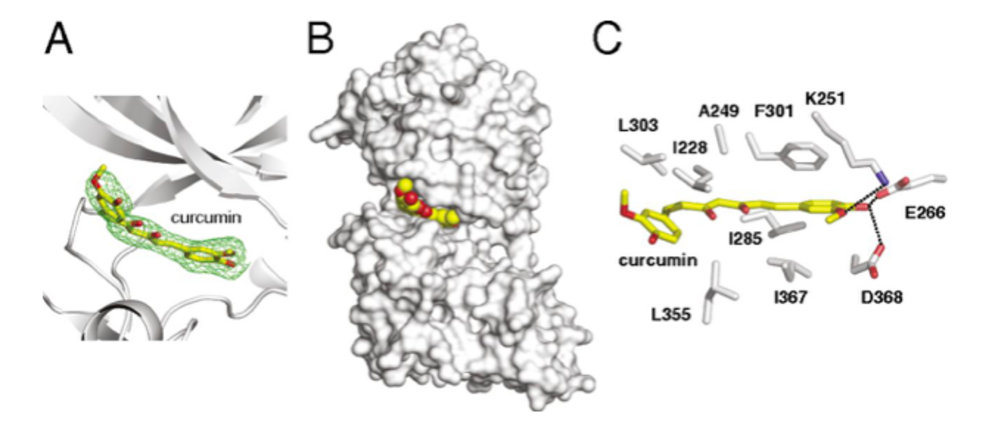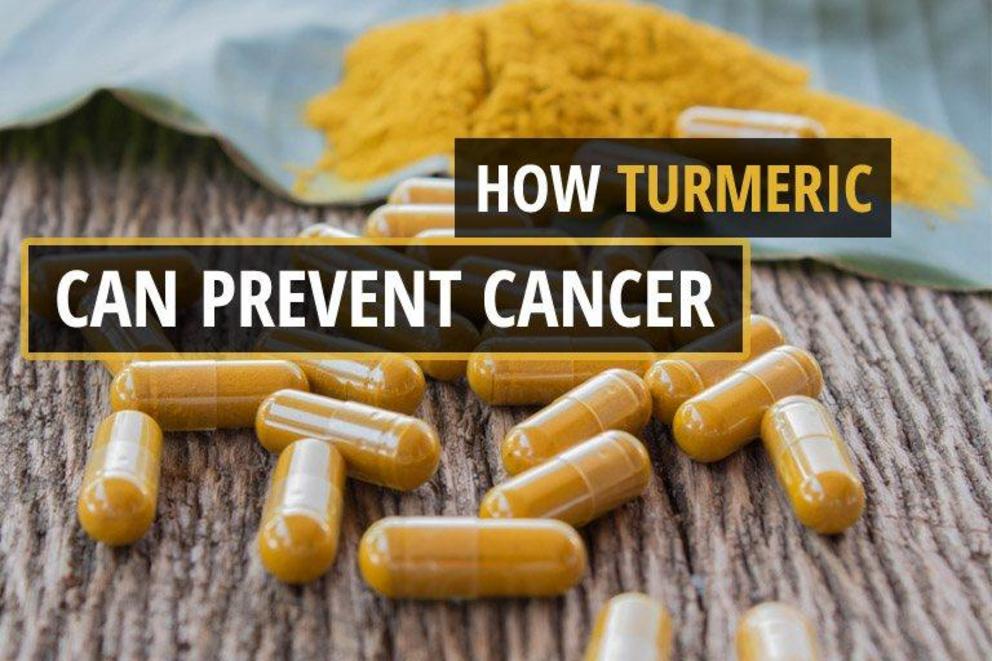Research confirms that curcumin, the active ingredient of turmeric, heals cancer
Over 2,000 studies have been done over the past decade or so that indicate and confirm the ability of curcumin, the active ingredient of turmeric, to act as a healing agent for cancer.
The prestigious University of Texas MD Anderson Cancer Center’s research determined, in 2011, that curcumin was able to create apoptosis in cancer cells that normally resist apoptosis, without endangering normal cells. (Source)
An earlier human clinical trial at the MD Anderson Cancer Center was conducted in 2008, involving 25 patients with pancreatic cancer, the most difficult and lethal cancer to put into remission. Their oral curcumin was not so bio-available, as blood levels were not commiserating with the amounts consumed.
Even with that poor bio-availability, two patients’ tumors did shrink while the others demonstrated positive biological markers conducive to increased immune system activity against their pancreatic cancers with diminishing biological markers that promoted cancer’s spread. There were no adverse side effects. (Source)
But it wasn’t until the summer of this year, 2018, that the precise primary biochemical dynamic that made turmeric’s active ingredient curcumin effective against cancer was isolated by researchers in San Diego with cooperating academic medical researchers in China.
Crystal Structure Analysis Reveals Curcumin Enzyme Responsible for Cancer Cell Demise
The actual study was first published online in the journal PNAS (Proceedings of the National Academy of Science) on July 9, 2018, and put into hard copy print on August 7th of the same year.
The researchers used X-ray crystallography, a technique for determining the three-dimensional structure of molecules by diffracting X-rays from crystalized molecules to collect data for reconstructing the electronic density and assembly of atoms or molecules within that crystal. (Source)
The resulting report was titled: Ancient drug curcumin impedes 26S proteasome activity by direct inhibition of dual-specificity tyrosine-regulated kinase 2.
We need to decode that some.
26S proteasome:
… proteasome function is essential for protein homeostasis and influences the regulation of most cellular processes, and inhibitors of the proteasome have proven to be very valuable research tools and therapeutic agents that have prolonged the lives of thousands of patients with multiple myeloma. (Source with details)
Dual specificity tyrosine phosphorylation regulated kinase 2 as DYRK2:
A gene on chromosome 12q15 [which is found in several types of cancer tumors] that encodes a dual specificity kinase involved in the control of mitotic transition and the regulation of cellular growth and/or development by phosphorylation of … [several genetic, protein components, and enzymes with cells]. (Source)
From the study’s text:
In the current study, we provide evidence that curcumin is a specific and potent inhibitor of DYRK2 and regulates the proteasome activity via DYRK2 inhibition. Cocrystal structure of curcumin with DYRK2 reveals that curcumin binds potently to the active site of DYRK2 via hydrophobic and hydrogen bonds.
Furthermore, curcumin was found to not affect the proteasome activity of cells with DYRK2 deletion.
Notably, curcumin treatment significantly reduced tumor volume in a TNBC mouse xenograft model, and the tumor volume was comparable to DYRK2-depleted tumors. The results establish that the inhibition of the DYRK2–proteasome axis is the primary mode of action of curcumin with expanded therapeutic utility in proteasome inhibitor-resistant cancer burdens. (Source)
The following graphic representation with explanation below is from the study:

Structure of DYRK2 is in complex with curcumin. (A) The Fo–Fc difference electron density map (2.5 σ) calculated before curcumin was modeled is shown as a green mesh, revealing the presence of curcumin. (B) Curcumin occupies the ATP-binding pocket of DYRK2. Curcumin atoms are shown as yellow and red spheres. DYRK2 is shown in a surface representation. (C) Detailed interactions between DYRK2 and curcumin. Hydrogen bonds are shown as dashed lines.
Commentary on the Study
Some pharmaceutical industry compounds have already been developed to inhibit DYRK2, but they create toxic side effects. The researchers acknowledged pharmaceutical drugs’ toxic side effects and intended to look for a safer substitute.
They already knew that curcumin can play a solid role in conquering cancers, even if relegated only to serve as an adjunct, and that it was a safe compound used for both cuisine and medical purposes for over 2,000 years.
It has been used with certain chemotherapeutic drugs as an adjunct, resulting in less damage to non-cancerous cells and increased efficacy with tumor cells.
It was commonly considered that curcumin would not be effective for cancer by itself due to its limited bio-availability when consumed orally. It’s known that curcumin’s bio-availability is hampered by digestive gastric juices and these researchers also claim that curcumin is expelled from the bloodstream too rapidly as well.
The UC San Diego researchers confided to Science Daily:
“Our primary focus is to develop a [pharmaceutical] chemical compound that can target DYRK2 in patients with these cancers”, explained UC San Diego professor Jack E. Dixon, Ph.D.
“In general, curcumin is expelled from the body quite fast,” added UC San Diego pharmacologist Sourav Banerjee.
“For curcumin to be an effective drug, it needs to be modified to enter the bloodstream and stay in the body long enough to target the cancer. Owing to various chemical drawbacks, curcumin on its own may not be sufficient to completely reverse cancer in human patients.” (Source)
This strongly suggests that the results of this research are meant to be exploited by Big Pharma and mainstream oncology for financial benefits while creating harm from side effects to patients with patented synthetic molecules that offer negligible health benefits at very high prices.
How You Can Get Optimum Bio-availability from Curcumin
Traditional techniques involve combining turmeric with saturated fat and piperine (the active ingredient of black pepper) while cooking over heat. The saturated fat protects curcumin from gastric juices to allow its penetration into small intestines where it can be absorbed into the blood. Black pepper’s piperine enhances curcumin’s cellular absorption.
First, make turmeric paste using purified water and turmeric powder with a ratio of two parts water to one part non-irradiated, preferably organic, turmeric powder over heat. Stir until a thick paste with uniform consistency occurs, adding water or turmeric as needed.
Allow it to cool off. Then take whatever paste you want to make Golden Milk and heat it with the best whole milk you can find while stirring in a pan over low heat. Too many Golden Milk advocates insist on non-dairy milk, but you can watch their cooking and blending techniques on YouTube videos.
Add a dollop of virgin coconut oil with around a teaspoonful of freshly ground black pepper. Stir until you get a consistency that you’re able to drink.
After refrigerating, you may have to warm it up some again or put it into a blender to liquefy the coconut oil that hardens when refrigerated. It’s not rocket science. What’s important is combining the key ingredients with heat.
There are other solutions that involve much less labor. Curcumin extracts are sometimes sold in enteric-coated capsules that protect the curcumin from gastric juices. They may also contain piperine. Those are the best types of convenient curcumin supplements sold over the counter.
You can also go online and find liposomal curcumin. Liposomal encapsulation technology (LET) not only protects the curcumin from gastric juices, but it also enables the lipid encapsulated curcumin molecules to penetrate fatty cell walls.
This is pricier than the other options. But it may be the most effective and convenient.

